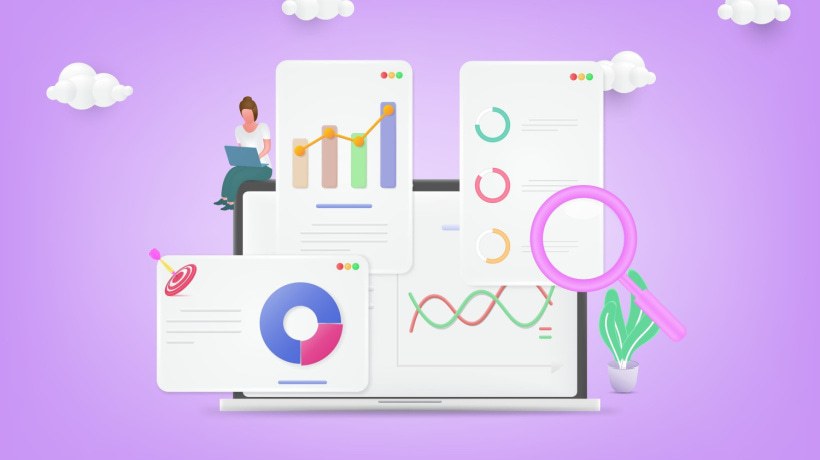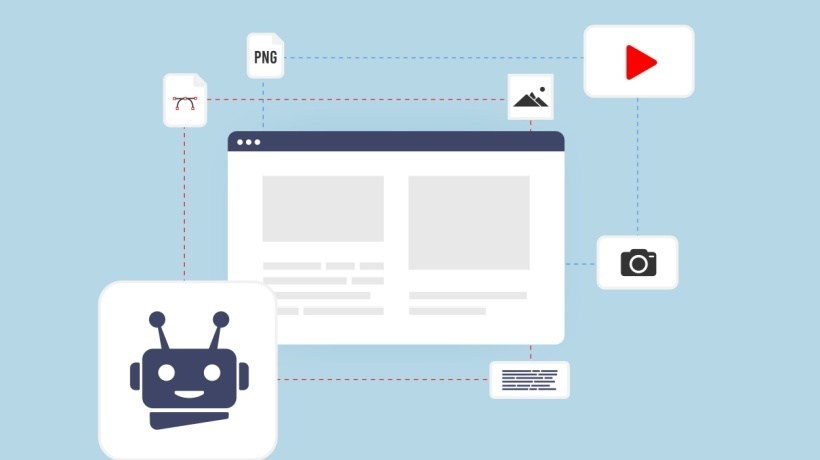Smarter L&D Programs With No-Code Analytics Dashboards
In today's hyper-digital workplace, Learning and Development (L&D) has moved beyond one-size-fits-all training models. Organizations now demand insights—real-time, actionable, and visual. And yet, many L&D teams are still navigating fragmented systems, manually compiling reports, and struggling to translate data into decisions. This is where no-code platforms step in, transforming the way learning analytics are built, tracked, and acted upon.
With real-time learning analytics dashboards, businesses can centralize data from scattered sources, track training progress automatically, and uncover knowledge gaps without writing a single line of code. For L&D leaders, HR heads, and team managers, this means better visibility, faster decisions, and a higher return on learning investments.
The Shift To Data-Driven L&D
The digital learning space has evolved rapidly in recent years. Hybrid work, skills gaps, and the pressure to reskill employees quickly have driven the demand for better training outcomes. But what defines "better"? The answer lies in data. Instead of relying on outdated metrics like course completion alone, L&D leaders are now leaning into engagement rates, performance trends, and ROI, making data the backbone of decision making.
Why L&D Needs Real-Time Analytics Today
L&D programs are no longer limited to onboarding or compliance. They now fuel workforce transformation, upskilling initiatives, and talent retention. But without the right visibility, even the most well-designed training programs can fall flat.
Here's what modern L&D teams struggle with:
- Data buried across multiple Learning Management Systems (LMSs), HR platforms, and spreadsheets.
- Manual reporting that takes days (or weeks) to compile.
- Inability to track personalized learning journeys or adapt based on learner behavior.
- Lack of insights into engagement, completion rates, and post-training performance.
Real-time analytics offer a solution. When data is live, visual, and unified, learning leaders can shift from being reactive to proactive—adjusting programs on the fly, allocating resources better, and measuring true impact.
No-Code Platforms: The Game-Changer For Learning Analytics
Traditionally, building dashboards required IT involvement, BI tools, or dedicated developers. But with no-code platforms, L&D teams can now design, automate, and deploy custom dashboards themselves.
Here's how no-code changes the game:
- Drag-and-drop interfaces allow users to build workflows with a visual builder, forms, reports, and dashboards with zero coding skills.
- Integration modules connect with LMSs, HRIS tools, cloud drives, and other data sources effortlessly.
- Automation engines update dashboards in real-time as new data flows in.
- Role-based access ensures that the right insights reach the right stakeholders.
The result? A smarter, faster, and democratized approach to data-driven learning.
Step-By-Step: Building A Real-Time Learning Dashboard With No-Code
Centralize Data From Multiple Sources
The first challenge in L&D analytics is scattered data. Training details might live in an LMS, assessment scores in a spreadsheet, feedback in survey tools, and attendance logs in HR systems.
With a no-code platform, you can create connectors or import tools to:
- Integrate with your LMS via APIs.
- Pull attendance or employee data from your HRMS.
- Sync assessment and quiz results from forms or Google Sheets.
- Merge feedback from Typeform or Microsoft Forms.
This data is then stored in a central workspace, where it's standardized and ready for visualization.
Define KPIs And Metrics
A dashboard is only as good as the questions it helps you answer. Before jumping into visual design, define your core metrics. Some common L&D KPIs include:
- Completion rate
Percentage of learners who completed a course. - Time to completion
Average duration per learner. - Assessment scores
Average and per-module performance. - Drop-off points
When and where learners disengage. - Knowledge gaps
Areas where learners consistently underperform. - Training ROI
Pre- and post-training performance metrics.
No-code tools allow you to define these fields with formula builders, filters, and conditional logic—just like setting up Excel formulas, but in a guided interface.
Automate Progress Tracking
Manual tracking is error-prone and time-consuming. A no-code platform lets you automate it through:
- Auto-updated fields
Once a learner completes a module, the progress bar moves up. - Trigger-based updates
When an employee scores below a threshold, a knowledge gap flag appears. - Notifications
Team leads get automatic alerts if someone hasn't completed a mandatory course. - Status badges
Learners can be tagged as "In Progress," "Completed," "At Risk," etc.
This not only saves time but ensures real-time visibility into learner journeys.
Visualize With Custom Dashboards
Now comes the fun part: converting raw data into interactive visuals. No-code platforms offer pre-built widgets and customization options to create:
- Bar and line charts for completion trends and progress.
- Pie charts for score distribution.
- Heatmaps to track engagement or content drop-off.
- Filters and dropdowns to switch views by team, department, region, or trainer.
- Drill-downs that let users click into a data point to see learner-level details.
Each widget can be tailored to the needs of a specific role—what an L&D manager needs is different from what a CLO or a team lead would want to see.
Set Role-Based Access
Not everyone needs to see everything. With role-based dashboards:
- Team leads see the training status for their team members.
- HR managers see company-wide engagement and certification progress.
- CLOs and executives view strategic KPIs like training ROI and skills readiness.
Access controls are as easy as setting user roles in the platform, ensuring data security and relevance.
Real-World Use Case: Dashboards For L&D Stakeholders
For Team Managers
Team managers often juggle deadlines, team morale, and performance improvement. With a real-time L&D dashboard:
- They can instantly see who has completed what.
- Identify employees falling behind on compliance or skill refreshers.
- Get nudges to follow up on overdue trainings.
- Align learning with team-level KPIs.
Instead of chasing spreadsheets or HR for updates, they get answers in clicks.
For HR Heads
HR is focused on talent development, DEI initiatives, and retention. With dashboards:
- They can track training effectiveness across demographics.
- Compare departments or business units on L&D participation.
- Monitor mandatory training (e.g., POSH, security) compliance.
- Ensure new hires complete onboarding modules on time.
This gives HR a strategic role in workforce development rather than just an administrative one.
For Chief Learning Officers (CLOs)
CLOs need a bird's-eye view of learning ROI. Dashboards help them:
- Track organization-wide learning adoption.
- Compare skill development against business goals.
- Identify areas for investment or intervention.
- Present training outcomes to C-suite or board with confidence.
No-code dashboards become their executive command center for learning impact.
Benefits Of No-Code Learning Analytics Dashboards
Let's wrap up with why this approach is a leap forward for L&D:
- Speed
Build and deploy dashboards in hours—not weeks. - Cost efficiency
Reduce IT dependence and BI tool licensing costs. - Customization
Tailor dashboards for every stakeholder without waiting on dev cycles. - Real-time insights
Make faster, data-backed decisions as learners progress. - Better engagement
Visual reports make learning data easier to interpret and act on. - Faster stakeholder alignment
Real-time dashboards keep business, HR, and L&D leaders on the same page without recurring sync-ups. - Encourages a culture of learning
When learners see their progress and get recognized through visible metrics, engagement improves significantly.
Tips To Get Started With No-Code L&D Dashboards
If you're ready to start building your own learning dashboards, here are a few practical steps to set you up for success:
- Audit your existing data
Map out where your training data currently resides. Make a list of platforms, file types, and formats. - Identify key stakeholders
Define who will use these dashboards—HR, L&D, IT, business leaders—and tailor the design accordingly. - Choose the right no-code platform
Look for one that supports integrations with your LMS, allows automation, and offers dashboard templates. - Pilot with a small team
Start with a single department or training program before rolling out organization-wide. - Measure and iterate
Use feedback loops. What are stakeholders finding valuable? What metrics are missing? Use insights to improve the next version.
From Insights To Action: Using Dashboard Data To Improve Learning Outcomes
While dashboards provide visibility, their real power lies in enabling informed action. Here's how L&D teams can translate insights into improvements:
- Personalize learning journeys
Use performance and engagement data to recommend specific content or pathways to individual learners. - Optimize content delivery
If certain modules have high drop-off rates or low scores, it's a cue to revise the format, pacing, or delivery method. - Close knowledge gaps
Identify recurring weak areas across teams and design targeted microlearning or refresher sessions. - Adjust program design
Use real-time feedback and participation trends to tweak timelines, formats (e.g., self-paced vs. instructor-led), or even program goals. - Reward high engagement
Create incentives or recognition programs for top learners based on dashboard insights.
Looking Ahead: The Future Of L&D Is Agile, Data-Led, And Empowered
As business cycles shrink and digital skill demands rise, agility in learning isn't optional—it's essential. No-code platforms offer more than just convenience; they equip L&D teams with the power to adapt quickly, scale programs efficiently, and demonstrate business impact.
Data isn't just a back-office metric anymore. It's the fuel that drives personalized, effective, and high-performance learning cultures. By embracing no-code tools for analytics, you're not just building dashboards—you're building the foundation of a smarter, more strategic L&D function. The future of L&D isn't just about great content—it's about great visibility. And no-code helps you get there faster.






